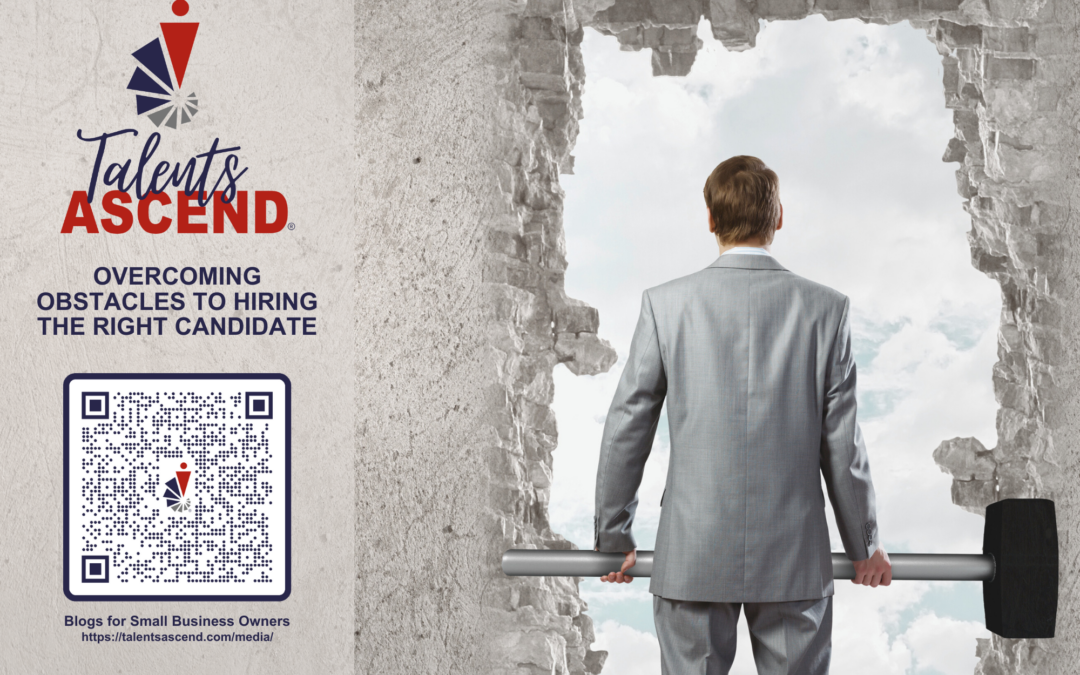Hiring the right candidate is one of the most critical challenges businesses face today. Despite a growing emphasis on finding individuals with the right skills, many companies still struggle to fill roles with top talent. Traditional hiring hurdles—like talent shortages, misaligned expectations, and outdated processes—persist, even as the focus shifts toward skills-based hiring. In this blog, we’ll explore the key obstacles holding businesses back from hiring the right candidates and how platforms like Talents ASCEND are helping to bridge the gap by prioritizing skills over conventional credentials.
Obstacle 1: Talent Scarcity and Skills Gaps
One of the biggest roadblocks businesses encounter is the scarcity of candidates with the specific skills needed for today’s rapidly evolving job market. Industries like technology, healthcare, and manufacturing are particularly affected, where specialized skills—think cybersecurity expertise or advanced machining—aren’t always widely available. This scarcity often leaves positions vacant for months, stalling projects and growth.
The Skills-Based Solution: Talents ASCEND tackles this by connecting businesses with a diverse pool of candidates who have verifiable skills, regardless of where or how they acquired them. Instead of waiting for the “perfect” candidate to appear, companies can use Talents ASCEND to identify individuals who demonstrate the precise abilities needed for the role—whether through formal training, self-taught experience, or alternative pathways. This widens the talent pool and reduces the time spent searching for elusive skill sets.
Obstacle 2: Misalignment Between Job Requirements and Candidate Capabilities
Too often, businesses define job requirements that don’t fully align with the skills candidates actually possess—or need—to succeed. This disconnect can stem from vague job descriptions, an overemphasis on outdated qualifications, or a failure to adapt to emerging industry demands. As a result, companies overlook capable candidates who might lack a specific keyword but excel in practical application.
The Skills-Based Solution: Talents ASCEND emphasizes a clear, skills-first approach. Businesses can specify the exact competencies required—say, proficiency in a programming language or hands-on experience with equipment—and the platform matches them with candidates who have proven those abilities. By focusing on what candidates can do rather than what they’ve done, this method ensures a better fit between job demands and candidate strengths, minimizing mismatches.
Obstacle 3: Lengthy and Inefficient Hiring Processes
In a competitive job market, slow hiring processes can cost businesses the best candidates. Lengthy interview rounds, excessive approvals, or delays in decision-making often frustrate skilled individuals, pushing them to accept offers elsewhere. This is especially true for short-term or project-based roles where speed is critical.
The Skills-Based Solution: Platforms like Talents ASCEND streamline the hiring process by leveraging technology to quickly assess and verify candidate skills. Instead of dragging candidates through multiple hoops, businesses can use skills assessments or performance-based evaluations integrated into the platform to make faster, data-driven decisions. This efficiency not only secures top talent but also enhances the candidate experience, making the company more attractive.
Obstacle 4: Resistance to Change Within Organizations
Shifting to a skills-based hiring model can meet internal resistance. Hiring managers accustomed to traditional methods may hesitate to trust candidates without conventional backgrounds, fearing they won’t perform as well as those with familiar qualifications. This reluctance can perpetuate outdated practices and limit access to innovative talent.
The Skills-Based Solution: Talents ASCEND helps overcome this by providing tangible evidence of candidate capabilities through skills validation tools. For example, a manager skeptical of hiring a self-taught welder can see proof of their expertise via certifications or test results on the platform. This builds confidence in the process, encouraging broader adoption across teams and aligning hiring with modern workforce needs.
Obstacle 5: Competition from Other Employers
In a tight labor market, businesses aren’t just competing with candidates’ availability—they’re up against other employers vying for the same skilled individuals. Larger companies with bigger budgets or more flexible work options can easily outpace smaller firms, leaving them struggling to attract talent.
The Skills-Based Solution: Talents ASCEND levels the playing field by giving businesses of all sizes access to a nationwide network of skilled candidates. Smaller companies, in particular, benefit from the platform’s ability to highlight their unique opportunities—like hands-on roles or growth potential—to candidates who prioritize skill application over perks. This targeted approach helps them stand out without relying solely on financial incentives.
Why Talents ASCEND Stands Out
Talents ASCEND isn’t just another hiring platform—it’s a game-changer for skills-based recruitment. By focusing on what candidates can do rather than where they’ve been, it addresses the core obstacles businesses face. It connects employers with a diverse, skilled workforce, reduces hiring timelines, and provides tools to verify abilities upfront. Whether you’re a small business needing a niche expert or a large firm filling multiple roles, Talents ASCEND offers a practical, efficient way to find the right fit.
Moving Forward: Embracing a Skills-First Future
The obstacles to hiring the right candidate—scarcity, misalignment, inefficiency, resistance, and competition—aren’t going away on their own. But by adopting a skills-based approach with platforms like Talents ASCEND, businesses can turn these challenges into opportunities. The key is to focus on capabilities, adapt processes, and trust in the potential of a broader talent pool. In today’s dynamic market, hiring the right candidate isn’t about finding a needle in a haystack—it’s about redefining what the needle looks like and knowing where to look.

